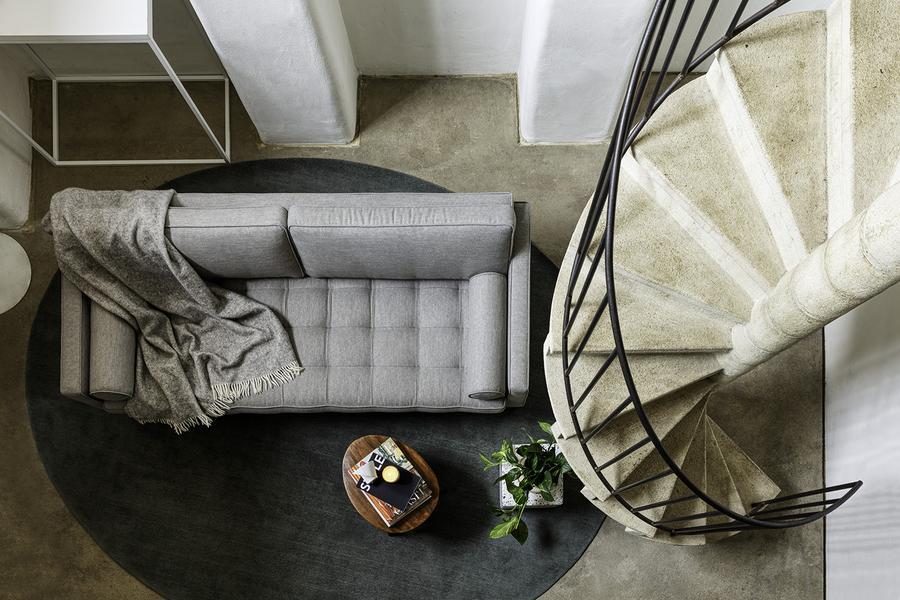Sofa Filling Guide: Which Cushion Filling is Best?

Sofa Filling Guide: Which Cushion Filling is Best?
A question that plagues the minds of many people buying their sofa for the first time, is which filling is best? With so many different styles, textures, colours and upholstery available, many don’t even think about what’s on the inside and then get stung when they realise it’s not as comfortable as they imagined it would be.
So, we’re here to tell you all about sofa cushion fillings to help you decide which type will suit your needs and preferences the most. Whether you prefer a firm seat with lots of support or something that you can sink into after a long day.
What are the different types of sofa fillings?

There are many different types of sofa fillings available and, more often than not, many sofas use a combination of fillings to achieve different levels of support and comfort throughout. The 3 most common sofa fillings are:
Pros and cons of feather sofa fillings
If you’re considering a feather sofa filling, here are the top pros and cons to help you decide:
Pros:
- Incredibly plush and comfortable.
- Gives your sofa a luxurious look.
- Able to choose the level of firmness. More feathers = a firmer sofa.
- Great insulating properties, keeping you warm and cosy.
Cons:
- Usually the more expensive option.
- Requires plumping daily to keep it looking full.
- Some people are allergic to feathers.
- Feather’s aren’t waterproof so if you’re prone to spilling things or have any children and pets it might not be the best option.
At Swyft, we do not offer any sofas with feather-filled cushions.
Pros and cons of foam sofa fillings
Foam sofa fillings are the most common type and usually the go-to choice for many people. Here are the pros and cons for choosing a foam sofa filling:
Pros:
- Provides firm support.
- Keeps its shape.
- Low maintenance - only needs plumping once a week and turning the cushions occasionally.
- Different varieties of density are available so it’s easier to find the perfect level of comfort.
Cons:
- Low-density foam can decay quicker, causing the sofa to sag and not bounce back as quickly.
- Lower density foam could also be more flammable.
- Not able to have different levels of firmness throughout the sofa, so some may find the structure uncomfortable.
Top tip: Foam sofas are great for those with limited mobility or back problems as they offer a lot more support and are easier to stand up from. Our Model 01 range has a double-layered foam, making the sofas super comfortable without having to compromise on anything. And our Model 03 range offers a foam filling on a webbing base so you can be sure they’ll always spring back into shape. In fact, all of our sofas have foam fillings for the cushions.
Pros and cons of fibre sofa fillings
Fibre-filled sofas are known for being soft and squishy and are very popular among many. Here are the pros and cons for a fibre sofa filling:
Pros:
- Great option for people with feather allergies but want the ‘sink-in’ feeling.
- Often more affordable than feather or foam.
- Offer a plump and inviting appearance.
- Designed to mould to your shape as you sit back and relax, making it feel extra cosy.
Cons:
- Regular plumping will be required so the air is restored between the fibres.
- May wear down quicker and won’t last as long as a foam-filled sofa.
- Doesn’t spring back into shape as quickly as foam.
- Regular cleaning and vacuuming is also required more with fibre-filled sofas.
Top tip: Foam sofas wrapped in a layer of fibre will provide the durable support of a foam sofa and the soft, plush feel of fibre.
For more help and advice take a look at our in-depth guide on how to choose the most comfortable sofa.
If you’re wanting to spruce up your current sofa and make it more comfortable, have a look at our sofa cushions guide to help you choose the right ones for your sofa and learn how best to arrange them. You can also shop our collection of cushions that will not only help with comfort, but also style.
Share
Tags
- how to guide
- TEMPLATE_GUIDE
- tips
- translated-DE





